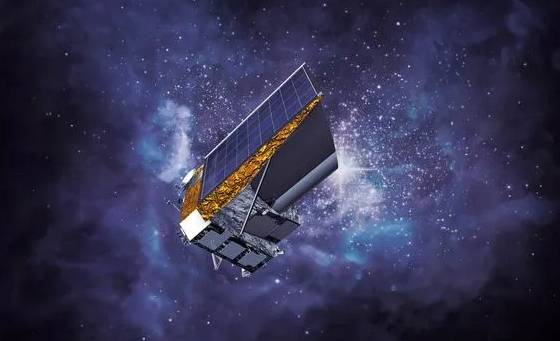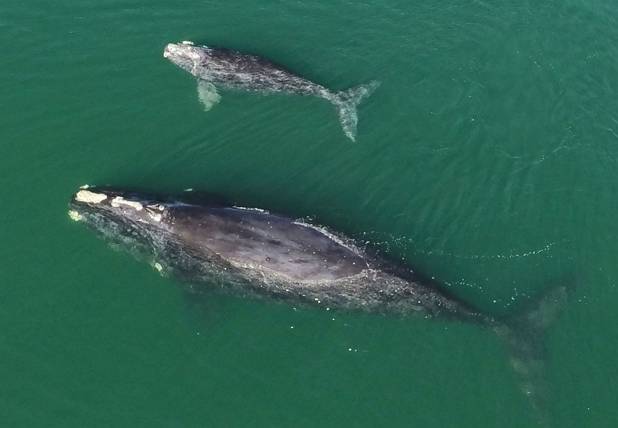The Euclid satellite, which was assembled in Cannes, is scheduled to be launched this summer. This state-of-the-art telescope is designed to map the universe and provide scientists with a better understanding of the enigmatic dark matter and dark energy.
The Euclid satellite, assembled in the clean rooms of Thales Alenia Space in Cannes, is now prepared to launch and create a 3D map of around two billion galaxies.
The focus of this mission by the European Space Agency is to enhance the understanding of dark matter and dark energy, which despite comprising 95% of the Universe, remains poorly understood.
The initial images from Euclid are anticipated to be available in the autumn season, however, it will take approximately a year and a half before the first results from its analysis are revealed.
Despite making up an estimated 95% of the universe, we have little knowledge about dark matter and dark energy. Even after several decades, they are still considered too mysterious for scientists’ taste, who have been feeding on their theories and fantasies.
Giuseppe Racca from the European Space Agency (ESA) reminds us that all we know about dark matter is that it has gravity, and dark energy causes the universe to expand at an accelerated rate. Their true nature remains a mystery, which is a “cosmic embarrassment” given their significant presence in the universe. To unravel their secrets, ESA is launching the Euclid mission. The satellite was assembled in the clean rooms of Thales Alenia Space in Cannes and is set to launch this summer. Euclid will remain in orbit for at least six years, producing a 3D map of approximately two billion galaxies.
And it is this vast collection of unreleased data, analyzed by numerous scientists, that is expected to expand our understanding of dark matter. How will it do that? And what potential discoveries might emerge? This week, 20 Minutes interviewed some of these experts who were convening at the manufacturer’s facility near the Croisette.
What will this 3D mapping of two billion galaxies be used for?

The European Space Agency aims to address two fundamental questions with its €1.5 billion Euclid mission: the origin of the universe and the reason behind its accelerated expansion, contrary to the gravitational pull of matter that should slow it down. According to Stéphanie Escoffier, research director at the CNRS, the mission’s major advantage is its ability to observe a vast number of galaxies, which will improve the precision of its results. The 3D mapping of two billion galaxies is expected to be a significant breakthrough in this field.
To put it into perspective, the Hubble space telescope has been observing the sky for 25 years, covering 25 square degrees of space from Earth. In contrast, the Euclid satellite will capture ten square degrees per day.
“This will enable us to study the distribution of galaxies precisely, providing insights into dark energy. We can also analyze their deformation, which will reveal the location of dark matter,” says the researcher.
By using the effect of “gravitational lensing”, scientists can quantify the absence of this “invisible” matter. This effect occurs when a celestial object deflects the rays emitted by a light source. By measuring the quantity of matter between the satellite and the observed galaxy, they can analyze it.
How will the mission work?
Euclid is scheduled to be launched aboard a SpaceX Falcon 9 rocket from Cape Canaveral in July and is expected to arrive at its destination in October. The telescope will be placed in a heliocentric orbit around the sun, approximately 1.5 million kilometers from Earth, and will continuously capture images of the depths of the cosmos until 2029, and potentially beyond, if all goes well. With its sensor boasting over 600 million pixels, Euclid will provide images that will allow scientists to zoom in to nearly infinite levels, explains Pierre Casenove, who is responsible for the program at Cnes, the National Center for Space Studies.
That will be for the visible part. A second instrument, a “near-infrared spectro-imager and photometer”, will then enable “cosmologists to estimate the distance between us and the observed galaxy,” as described by Thales Alenia Space. Therefore, it is through this instrument that the obtained cartography will be modeled in 3D.
The amount of data generated by Euclid will be massive and will need to be distributed across several data centers in Europe. “We will need to process 26 Petabytes per year,” equivalent to 26,000 Terabytes, explains Giuseppe Racca, head of the mission at the European Space Agency (ESA).
“For comparison, the Hubble satellite generates 160 Terabytes each year.”
French astrophysicist David Elbaz, research director at the Atomic Energy Commission (CEA) and part of the consortium of 1,500 scientists from sixteen countries, warns that dealing with such a large amount of data will be a challenging task.
“We are excited, but also a little scared. We are going to have to deal with a data monster,” he adds.
What can we expect from these results?

Euclid’s observation will not only cover space but also time. The telescope, named after the mathematician known as the “father of geometry,” will capture light that has traveled up to ten billion years to reach it.
“In this way, we will be able to determine whether dark energy is a cosmological constant, whether it changes over time, or whether we need to question Einstein’s theory of general relativity,” adds Stéphanie Escoffier.
This is a significant discovery that Euclid could make.
David Elbaz finds the potential discoveries that Euclid could lead to fascinating. He explains that the 3D mapping could shed light on the origin of the universe. The mapping could reveal whether everything was born with the same gravity as observed on Earth, where an apple falls from a tree, or if gravity behaves differently in different parts of the universe. Elbaz gives an example of certain observed distant objects that instead of collapsing on each other, repel each other, which is analogous to anti-gravity. He suggests that this could provide insight into the concept of anti-gravity.
The question of what creates this anti-gravity is what many theories aim to answer, and this Esa mission will test them. The nature of dark energy, which is responsible for the acceleration of the universe’s expansion, is still very mysterious. Some theories propose that it is a property of space according to Einstein’s theory, while others suggest it is the quantum vacuum. There is also a more extreme possibility where the energy, referred to as phantom energy, would tear apart everything in the universe until there is nothing left. Even a hydrogen atom would not survive. The first images from Euclid are expected this fall, but it will take at least a year and a half for the first results of their analysis to come in.



